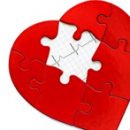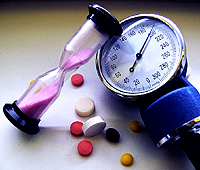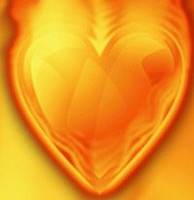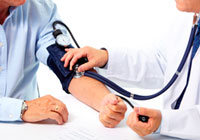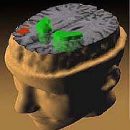Statistics of heart disease and mortality shows that the heart rate disorders, as the cause of death, make up about 10-15 percent of all heart disease.
Content
With each heart impact, there is a consistent reduction in its departments - at the atria, and then ventricles. Such abbreviations follow each other at equal intervals. Arrhythmia is called frequency violations, rhythm and sequence of heart departments.
Causes of flickering arrhythmia
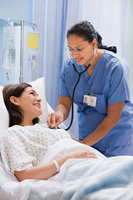 A healthy person provoke arrhythmia can abundant food, constipation, close clothes, insect bites, some drugs, stress. High risk of developing arrhythmia in people suffering from diabetes, especially if it is combined with obesity and elevated arterial pressure. Arrhythmias may occur at more harmless reasons: for example, premenstrual syndrome in women is often accompanied by arrhythmias, heart pains, a feeling of suffocation.
A healthy person provoke arrhythmia can abundant food, constipation, close clothes, insect bites, some drugs, stress. High risk of developing arrhythmia in people suffering from diabetes, especially if it is combined with obesity and elevated arterial pressure. Arrhythmias may occur at more harmless reasons: for example, premenstrual syndrome in women is often accompanied by arrhythmias, heart pains, a feeling of suffocation.
The predisposition to arrhythmias can be inherited, and may be a complication after a surgical operation on the heart. In addition, arrhythmia can be a symptom of a number of diseases:
- hypertension;
- heart defects, heart failure, ischemic heart disease;
- mitral valve prolapse;
- Diseases of the thyroid gland and a number of other hormonal disorders.
Cleaning arrhythmia
Consistency of the heart is ensured by a special conductive system of heart. These are specialized cells that produce and conduct electrical impulses, guiding the agreed reduction of the heart muscle.
The pulse that launching the reduction of the heart is produced in the right atrium, in the so-called sinus node (rhythm driver). This node is responsible for the fact that the heart is reduced with a frequency of 60-90 blows per minute. Then the signal applies to the rest of the atrium, causing them to reduce them, then on the ventricles. Violations in this system and lead to heart rate violations (arrhythmias).
Depending on whether violations arise in, all arrhythmias are divided into atrial and ventricular.
If the pulse frequency exceeds 90 shots per minute, talk about tachycardia. The heart rate may increase in physical or emotional load (this is a normal healthy heart reaction). Increased body temperature also causes tachycardia. It is believed that an increase in body temperature by 1 degree leads to an increase in the frequency of cardiac abbreviations by 10 strikes. Tachycardia can be a sign of very many diseases, but maybe the option of the norm.
If the pulse rate is less than 60 shots per minute, they say bradycardia. Bradycardia can also be absolutely healthy people. She, as a rule, is celebrated in athletes. Moderate bradycardia creates favorable conditions for the blood supply to the muscles of the heart, because the blood to it can do only when it is in a state of relaxation (t.E. between abbreviations).
Bradycardia should be distinguished by bradyismophygmia - rare pulse at normal heart rate frequency. Bradyssifigmia is noted if cuts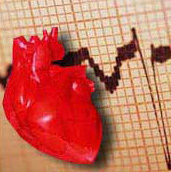 CA does not generate felt pulse waves.
CA does not generate felt pulse waves.
If premature reduction is consolidated in the correct rhythm of heart abbreviations, they are talking about extrasystole. The most common causes of extrasystole are vegetual-vascular dystonia, transferred myocarditis, gallbladder disease, smoking or stress.
With one of the most common - flickering arrhythmia - one of the phases of the cardiac cycle disappears, namely - the reduction of atria. Their muscle fibers lose the ability to work synchronously. As a result, the atrium is only chaotically twitch - flicker. From this and ventricles begin to decline nertramically.
Alsaed so-called paroxysmal rhythm disorders (paroxysm - attack, suddenly emerging condition). In an externally, a healthy person suddenly appears extremely frequent heartbeat - a rhythmic or nehydramine, an attempt to calculate the pulse is simply impossible for an inexperienced person, the frequency exceeds 150-200 blows per minute.
If the attack lasts longer than an hour and a half hours, shortness of breath and pain in the heart appear. Often an attack of heartbeat ends as suddenly, as it began. Heartbeat stops, a person needs to urgently empty the bladder, and urine stands out a lot. If you consider arrhythmia by a hazard signal, then paroxysmal disorders are the most serious of them.
Disturbance of the rhythm of the heart when snore and obstructive sleep apnea are very specific. At the time of stopping the breath, bradycardia is developing (deceleration of the heart rhythm), and in the ventilation phase after apnea there is tachycardia (acceleration of the rhythm of the heart). Sometimes the range of oscillations is 30-40 beats per minute, and these jumps may repeat every minute, or even more.
Those arrhythmias for whom are characterized by a quick change of frequency and regularity of cardiac rhythm or a sharp slowdown, the work of the whole heart is violated substantially - so much that the amount of blood emitted into the aorta is reduced. And since the most sensitive to «Blood starvation» is a brain, a person may experience a sudden strong dizziness or even losing consciousness.
Diagnosis of flickering arrhythmia
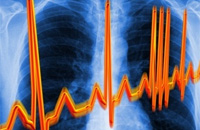 Arrhythmia is not an independent disease, but a symptom of illness. In principle, it can go by itself. But if arrhythmia is saved for several hours or complications arose, you need to immediately apply for medical care.
Arrhythmia is not an independent disease, but a symptom of illness. In principle, it can go by itself. But if arrhythmia is saved for several hours or complications arose, you need to immediately apply for medical care.
However, even if arrhythmia disappeared by itself, you should not postpone the visit to the cardiologist. Rhythm repeated violation may occur at any time and will end very tragically.
The main symptoms of arrhythmia are the feeling of extra or missed heart blows, too fast or slow heartbeat. Also possible feelings of weakness, fatigue, shortness of breath; Man pale, pain in the heart and others appear.
To determine the cause of arrhythmia, the arrhythmologist conducts ECG atropine samples - this is a method based on removal of a cardiogram after administration to Vienna atropine - a substance that causes the rhythm of the heart. In parallel, the method of phonocardiography is investigated by cardiac tones and noises. In addition, the usual record of the electrocardiogram (ECG) of a person, ECG in a state of physical exertion, ECG monitoring during the day and ultrasound examination of the heart - echocardiography.
Treatment of flickering arrhythmia
In the direction of the arrhythmologist or cardiologist to restore cardiac rhythm, it is carried out perch-mode electrostimulation - this method is also used to diagnose arrhythmia. If arrhythmia is a constant symptom and cannot be cured by the drug, then a person is implanted with a pacemaker - an artificial rhythm driver.
If you suffer arrhythmia attacks, you should take care of whether to warn them if possible. For example, people suffering from arrhythmias during solar activity - t.E. magnetic storms - you need to carefully comply with the prescriptions of doctors and always have medicines with it.

